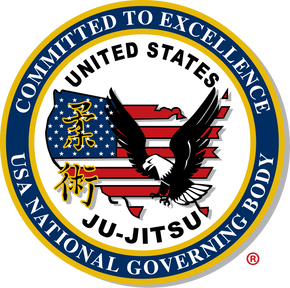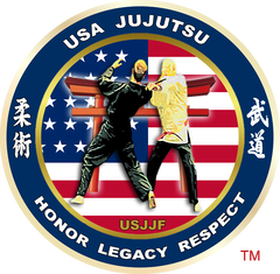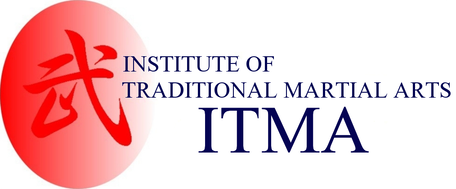Andrew Yiannakis, PhD.
Life Member - United States Ju-Jitsu Federation (USJJF) ®
Life Member - USA Traditional Kodokan Judo (USA-TKJ) ®
Member - USJJF Board of Directors
Chairman - Traditional Jujutsu Committee (USJJF)
Member - US Ju-Jitsu Senior Masters Caucus
Professor Emeritus, University of Connecticut
1. Started in Judo and Self Defense at age 17 (about 1961) at London Central YMCA (UK)
2. Have been training and studying Jujutsu and Judo for over 58 years
3. 8th Dan Jujutsu (USJJF, AJA, ATJA). Founding Member of ATJA.
4. 6th Dan Judo (USJJF & USA-TKJ)
5. Founder and Director, HESS Institute of Traditional Martial Arts (ITMA) at the University of New Mexico (http://unm.wsrjj.org/unminstitute.htm) (2009-2020)
6. Organizer, Annual Martial Arts Expo at UNM (2012, 2013, 2014, 2015,2016).
7. Founder and Soke of Wa Shin Ryu Jujutsu (Connecticut, 1982). See website for UNM Chapter at: http://unm.wsrjj.org/unmjj.html
8. Chief Instructor of the following Jujutsu Clubs. Notably these clubs are still operational since I started them, going all the way back to 1976:
Currently we have over 50+ students training in Jujutsu in Albuquerque, Illinois and Connecticut, and just over 25 are registered USJJF members.
9. Organizer "Friendship Seminars" in Albuquerque, NM (since 2012). Instructors from different martial arts are invited to teach at different venues in ABQ. Helps bring together diverse instructors and martial arts, furthering communication and cooperation (http://unm.wsrjj.org/events.htm)
10. Attended dozens of clinics and workshops. Some are listed below:
Dr. Steve Cunningham (7th dan in Tagaki Ryu Jujutsu). Attended over a dozen of his clinics and workouts. With Dr. Ashida Steve is one of the most knowledgeable martial artists I've ever studied with.
11. Author of JUJUTSU: Traditions, Ways & Modern Practices (2nd ed., 2019). Available on Amazon.
Currently working on 3rd edition
12. Author of several articles (with Linda Yiannakis) on various aspects of Jujutsu (e.g., "What is Traditional Jujutsu", "The True Meaning of Ju in Judo and Jujutsu", and "Principles of Warm-Up for Judo and Jujutsu", among others)
Three of the most significant pieces (arguably) of work I've written are:
(i) * Principles of Transitioning in Chaotic Fighting Environments. Article speaks to how to train and fight using relevant principles when things go awry and become chaotic.
(ii) *Jujutsu Training, Brain Stimulation and Neurogenesis. In this paper I discuss various bi-lateral and co-lateral forms of training that stimulate brain functions, and contribute to a superior quality of movement by developing fluency, timing, coordination, control and centered action. These are based on Japanese Internal Principles as envisioned by Jigoro Kano and are encapsulated in his famous dictum "Seiryoku Zenyo". That is, the generation of superior power with the best use of energy. This is popularly, but inaccurately translated as "maximum efficiency with minimum effort". However, even the incorrect translation captures the spirit of this famous dictum!
A major implication of training using Japanese Internal Principles in conjunction with the use of bi-lateral and co-lateral forms of practice, is the growth and development of multiple neural pathways in the brain. This makes for a healthy brain and the literature suggests that such a brain contributes to superior quality of movement and the ability to think fast in combative situations; a healthy and efficient functioning brain is also thought to contribute to longevity (there is limited research that supports this position).
Thus, Jujutsu training that is based on Japanese Internal Principles (these are listed in the 2nd edition of my book), in conjunction with bi-lateral and co-lateral forms of practice, are a very efficient way to teach and develop superior jujutsuka
and, at the same time, contribute to good health and longevity.
(iii) Paper on "How To Train Your Students Using Japanese Internal Principles".
The purpose of this paper is to help Jujutsu and Judo instructors to better teach their students by emphasizing methods of brain stimulation and bi-lateral and co-lateral forms of training. This approach is an elaboration/development of Kano's principle of Seiryoku Zenyo and helps focus on the development of a superior quality of movement (fluency, timing, control, coordination and centered action). I suggest that while there are various ways to help students develop a superior quality of movement, I have found through years of experience and research that the combination of Japanese Internal Principles with bi-lateral and co-lateral forms of training is a more effective method than anything else I've studied over my 58 years in the martial arts.
NOTE: I've identified 14 Japanese Internal Principles that conform to Kano's Seiryoku Zenyo and these are listed in the 2nd edition of my book. See p.5 for reference.
13. International Presentations on the Effects of Martial Arts Training on Mood and Empowerment
. Yiannakis, Kane and Tomporowski (2003). Martial Arts Training and Empowerment. Paper presented at 5th International Conference on Education, Athens, Greece (May 23-24)
. Yiannakis, Kane, Han and Lyras (2004). A Comparative Experimental Study of the Effects of Jujutsu, Karate and Judo on Mood. Presented at 2004 Pre-Olympic Scientific Congress, Thessaloniki, Greece (August)
14. Judo Competition Experience
In my early years in Judo, especially during my years in England, I was a varsity level competitor (for three years at Madeley College, Univ. of Keele). I continued competing until the age of 33 here in the US (for a total 14 years). After that age I focused my attention on teaching.
15. Some Notable Competition Honors in Judo
(i) Madeley College (England) Judo Champion (1965-67)
(ii) Cornell Invitational Judo Champion (1975)
(iii) Niagara Judo Championship, Silver Medalist (1975)
16. Other Honors/Awards
(i) Honored by my Jujutsu students at UConn with a plaque (2005-2006)
(ii) Honored by the Division of Athletics at UConn for contributing to the health and welfare of UConn Students (2005-2006)
(iii) Recipient of the much-coveted "Presidential Leadership Award" (USJJF), 2017
(iv) Honored by my Jujutsu students at UNM with a plaque for my contributions to Jujutsu, and to their personal growth an development (2019)
17. Rank Promotion History
To Shodan: from Leo Poulin through the USJA. Tested for it in Albuquerque, NM, around 1971.
To Nidan: from Dr. Sachio Ashida (NY)
To Sandan: from Sid Kelly (CT) In Judo
To Yodan: from Phil Porter (NY) In Jujutsu
To Godan: from Sid Kelly (CT) In Jujutsu
To Rokudan: from USJJF
To Shichidan: from USJJF
To Hachidan: from USJJF
To Kudan: from USJJF
18. Promoting Jujutsu and USJJF on the Internet
Twice a week, and as a public service, I produce and post videos of Jujutsu techniques and sequences on Facebook and Instagram. These posts help promote Jujutsu and the USJJF and they receive a lot of hits. I'm a firm believer that, for our arts to succeed, we need to do more than teach well and simply spread what we do by word of mouth. Social media reach a lot of potential students and this makes recruitment much easier and more effective.
The videos I post are also a good way for my students to revisit and review techniques I've already taught in class, and help enhance learning and facilitate preparation for testing.
Dr. Yiannakis is the author of the Book: JUJUTSU - Traditions, Ways & Modern Practices
Contact Info -
Email: [email protected]
Website: http://www.wsrjj.org/v2/
Life Member - United States Ju-Jitsu Federation (USJJF) ®
Life Member - USA Traditional Kodokan Judo (USA-TKJ) ®
Member - USJJF Board of Directors
Chairman - Traditional Jujutsu Committee (USJJF)
Member - US Ju-Jitsu Senior Masters Caucus
Professor Emeritus, University of Connecticut
1. Started in Judo and Self Defense at age 17 (about 1961) at London Central YMCA (UK)
2. Have been training and studying Jujutsu and Judo for over 58 years
3. 8th Dan Jujutsu (USJJF, AJA, ATJA). Founding Member of ATJA.
4. 6th Dan Judo (USJJF & USA-TKJ)
5. Founder and Director, HESS Institute of Traditional Martial Arts (ITMA) at the University of New Mexico (http://unm.wsrjj.org/unminstitute.htm) (2009-2020)
6. Organizer, Annual Martial Arts Expo at UNM (2012, 2013, 2014, 2015,2016).
7. Founder and Soke of Wa Shin Ryu Jujutsu (Connecticut, 1982). See website for UNM Chapter at: http://unm.wsrjj.org/unmjj.html
8. Chief Instructor of the following Jujutsu Clubs. Notably these clubs are still operational since I started them, going all the way back to 1976:
- UNM Jujutsu, ABQ, NM (current)
- WSR Jujutsu at Sandia Budokan, ABQ, NM (current)
- UConn Jujutsu, Univ. of Connecticut, Storrs, CT (current)
- Eastern CT State University Jujutsu, Willimantic, CT (current)
- Illinois State University Jujutsu Club, IL (current)
- WSR Jujutsu at Duke City Dojo, ABQ, NM (current)
Currently we have over 50+ students training in Jujutsu in Albuquerque, Illinois and Connecticut, and just over 25 are registered USJJF members.
9. Organizer "Friendship Seminars" in Albuquerque, NM (since 2012). Instructors from different martial arts are invited to teach at different venues in ABQ. Helps bring together diverse instructors and martial arts, furthering communication and cooperation (http://unm.wsrjj.org/events.htm)
10. Attended dozens of clinics and workshops. Some are listed below:
- A.Watanabe (he helped coached the San Jose State team with Uchida Sensei in 1972-1973). I trained with their varsity team for five months. At the time most of them were NCAA Champions who subsequently went on to become Olympians. I'm still recovering!!!
- Attended a number of workouts and clinics by Brian Jacks (UK) at Renshuden Judo Academy in London (I think this was in 1966-1967)
- Sid Kelly (8th dan, USJA, CT). Attended dozens of his clinics in Judo and Jujutsu in Connecticut. Sid is an amazingly talented individual
- Nakamura Sensei (Jujutsu master from NYC). Attended several of his Jujutsu Clinics at Ju Nan Shin in Connecticut (from 1982 to 1992, approx.)
- Dr. Sachio Ashida (9th dan Kodokan and a Tenjin Shin Yo Ryu expert). Also studied under Dr. Ashida for just over three years and attended most, if not all of his clinics and workshops. He also selected me to be one of a dozen black belts who worked out with the 1976 Olympic Team when Dr. Ashida brought them to Brockport to get them ready for the Olympics. Man they were tough!!
- Phil Porter Sensei (numerous clinics in Judo and Jujutsu)
- Shihan Zigurds Olgrin. Taught Aiki Jutsu and Judo to French Foreign Legion. Shihan Olgrin was an invited guest to my club in Connecticut on a number of occasions where he put on several clinics and training sessions for us in Aiki Jutsu.
Dr. Steve Cunningham (7th dan in Tagaki Ryu Jujutsu). Attended over a dozen of his clinics and workouts. With Dr. Ashida Steve is one of the most knowledgeable martial artists I've ever studied with.
11. Author of JUJUTSU: Traditions, Ways & Modern Practices (2nd ed., 2019). Available on Amazon.
Currently working on 3rd edition
12. Author of several articles (with Linda Yiannakis) on various aspects of Jujutsu (e.g., "What is Traditional Jujutsu", "The True Meaning of Ju in Judo and Jujutsu", and "Principles of Warm-Up for Judo and Jujutsu", among others)
Three of the most significant pieces (arguably) of work I've written are:
(i) * Principles of Transitioning in Chaotic Fighting Environments. Article speaks to how to train and fight using relevant principles when things go awry and become chaotic.
(ii) *Jujutsu Training, Brain Stimulation and Neurogenesis. In this paper I discuss various bi-lateral and co-lateral forms of training that stimulate brain functions, and contribute to a superior quality of movement by developing fluency, timing, coordination, control and centered action. These are based on Japanese Internal Principles as envisioned by Jigoro Kano and are encapsulated in his famous dictum "Seiryoku Zenyo". That is, the generation of superior power with the best use of energy. This is popularly, but inaccurately translated as "maximum efficiency with minimum effort". However, even the incorrect translation captures the spirit of this famous dictum!
A major implication of training using Japanese Internal Principles in conjunction with the use of bi-lateral and co-lateral forms of practice, is the growth and development of multiple neural pathways in the brain. This makes for a healthy brain and the literature suggests that such a brain contributes to superior quality of movement and the ability to think fast in combative situations; a healthy and efficient functioning brain is also thought to contribute to longevity (there is limited research that supports this position).
Thus, Jujutsu training that is based on Japanese Internal Principles (these are listed in the 2nd edition of my book), in conjunction with bi-lateral and co-lateral forms of practice, are a very efficient way to teach and develop superior jujutsuka
and, at the same time, contribute to good health and longevity.
(iii) Paper on "How To Train Your Students Using Japanese Internal Principles".
The purpose of this paper is to help Jujutsu and Judo instructors to better teach their students by emphasizing methods of brain stimulation and bi-lateral and co-lateral forms of training. This approach is an elaboration/development of Kano's principle of Seiryoku Zenyo and helps focus on the development of a superior quality of movement (fluency, timing, control, coordination and centered action). I suggest that while there are various ways to help students develop a superior quality of movement, I have found through years of experience and research that the combination of Japanese Internal Principles with bi-lateral and co-lateral forms of training is a more effective method than anything else I've studied over my 58 years in the martial arts.
NOTE: I've identified 14 Japanese Internal Principles that conform to Kano's Seiryoku Zenyo and these are listed in the 2nd edition of my book. See p.5 for reference.
13. International Presentations on the Effects of Martial Arts Training on Mood and Empowerment
. Yiannakis, Kane and Tomporowski (2003). Martial Arts Training and Empowerment. Paper presented at 5th International Conference on Education, Athens, Greece (May 23-24)
. Yiannakis, Kane, Han and Lyras (2004). A Comparative Experimental Study of the Effects of Jujutsu, Karate and Judo on Mood. Presented at 2004 Pre-Olympic Scientific Congress, Thessaloniki, Greece (August)
14. Judo Competition Experience
In my early years in Judo, especially during my years in England, I was a varsity level competitor (for three years at Madeley College, Univ. of Keele). I continued competing until the age of 33 here in the US (for a total 14 years). After that age I focused my attention on teaching.
15. Some Notable Competition Honors in Judo
(i) Madeley College (England) Judo Champion (1965-67)
(ii) Cornell Invitational Judo Champion (1975)
(iii) Niagara Judo Championship, Silver Medalist (1975)
16. Other Honors/Awards
(i) Honored by my Jujutsu students at UConn with a plaque (2005-2006)
(ii) Honored by the Division of Athletics at UConn for contributing to the health and welfare of UConn Students (2005-2006)
(iii) Recipient of the much-coveted "Presidential Leadership Award" (USJJF), 2017
(iv) Honored by my Jujutsu students at UNM with a plaque for my contributions to Jujutsu, and to their personal growth an development (2019)
17. Rank Promotion History
To Shodan: from Leo Poulin through the USJA. Tested for it in Albuquerque, NM, around 1971.
To Nidan: from Dr. Sachio Ashida (NY)
To Sandan: from Sid Kelly (CT) In Judo
To Yodan: from Phil Porter (NY) In Jujutsu
To Godan: from Sid Kelly (CT) In Jujutsu
To Rokudan: from USJJF
To Shichidan: from USJJF
To Hachidan: from USJJF
To Kudan: from USJJF
18. Promoting Jujutsu and USJJF on the Internet
Twice a week, and as a public service, I produce and post videos of Jujutsu techniques and sequences on Facebook and Instagram. These posts help promote Jujutsu and the USJJF and they receive a lot of hits. I'm a firm believer that, for our arts to succeed, we need to do more than teach well and simply spread what we do by word of mouth. Social media reach a lot of potential students and this makes recruitment much easier and more effective.
The videos I post are also a good way for my students to revisit and review techniques I've already taught in class, and help enhance learning and facilitate preparation for testing.
Dr. Yiannakis is the author of the Book: JUJUTSU - Traditions, Ways & Modern Practices
Contact Info -
Email: [email protected]
Website: http://www.wsrjj.org/v2/




























